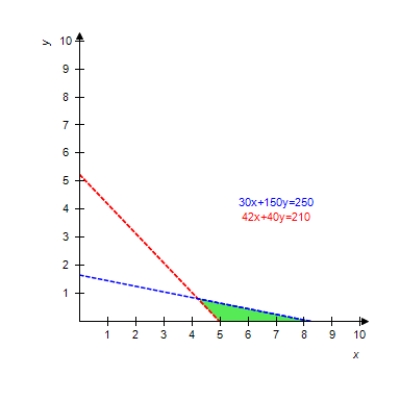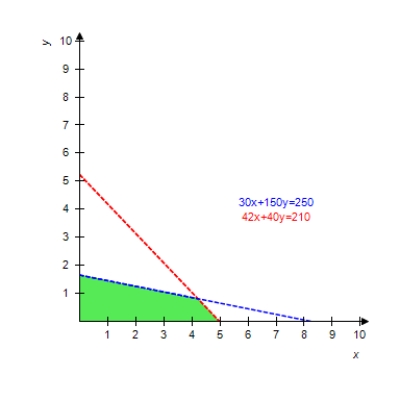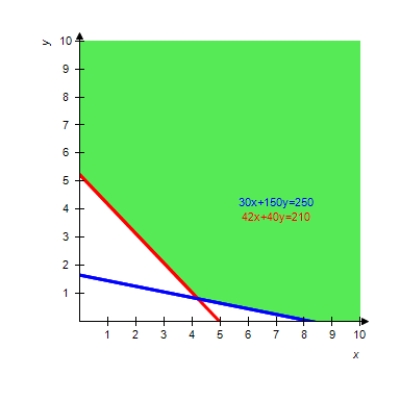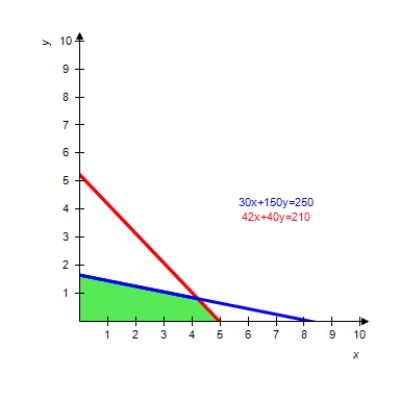Multiple Choice
The Video Star Company makes two different models of DVD players, which are assembled on two different assembly lines. Line 1 can assemble 30 units of the Star model and 42 units of the Prostar model per hour, and Line 2 can assemble 150 units of the Star model and 40 units of the Prostar model per hour. The company needs to produce at least 250 units of the Star model and 210 units of the Prostar model to fill an order. Let x represent the number of assembly hours for Line 1 and y represent the number of assembly hours for Line 2. Graph the region determined by the constraint inequalities.
A) 
B) 
C) 
D) 
E) 
Correct Answer:

Verified
Correct Answer:
Verified
Q11: A pork producer is considering two types
Q68: Use the simplex method to maximize the
Q69: The graph of the feasible region is
Q70: Assume that each nurse works 8 consecutive
Q71: Graph the solution of the system of
Q72: Use the simplex method to maximize the
Q74: State the following problem in a form
Q75: Suppose a primal minimization problem and its
Q77: The graph of the feasible region is
Q78: A primal maximization problem is given. Form